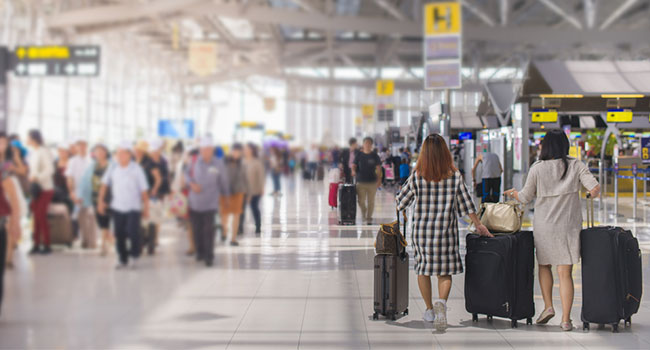
Airport Security: What to Expect in 2018
In 2018, travelers will see more changes to airport security.
- By Sydny Shepard
- Jan 12, 2018
Airport security is a huge topic within the security industry, mostly because it is always changing. Airport screening and facility security is evolving with changes in our technology and is becoming broader to protect against and prevent a mass amount of possible threats.
In 2018, travelers will see more changes to airport security. Here's what to expect:
Screening: Electronics
In 2017, the Transportation Security Administration announced it would begin to roll out a stronger screening procedure for electronics larger than a cellphone. For years, laptops were the only thing travelers would have to remove from their bags to be screened separately, but in 2018 you'll see a rise in electronics being singled out at the security checkpoints. The new measures require that all electronics larger than the average smartphone, such as e-readers, tablets, noise-cancelling headphones and hand-held gaming consoles, will need to be placed in a separate bin.
Identification for Domestic Flights
Begging Jan. 22, if you have a driver's license or identification card issued by a state that is not compliant with the minimum security standards of Real ID Act, you must have an alternative form of identification in order to fly domestically. You can see if you state is compliant or has been approved for an extension at dhs.gove/real-id.
A list of acceptable alternative forms of identification include a United States passport or a Department of Homeland Security trusted traveler card. Find more identification forms at tsa.gov/travel/security-screening/identification.
"Smart" Bags
Starting on Jan. 15, major airlines, including American, Delta, United and Hawaiian, will no longer accept smart bags with lithium-ion batteries unless the batteries can be removed on site. The airlines believe the batteries have the potential to overheat and start a fire during the flight. So, if you are thinking of traveling with a smart bag, such as the ones that include a built-in charger for your smartphone, you might want to learn to take the batteries out first.
About the Author
Sydny Shepard is the Executive Editor of Campus Security & Life Safety.